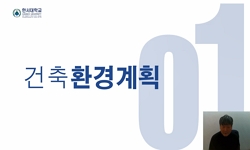Objective: This study aims to identify important physical design variables in designing a necklace type wearable device, and to present design guidelines to maximize comfort that a user feels upon wearing the device. Background: Interests in fitnes...
http://chineseinput.net/에서 pinyin(병음)방식으로 중국어를 변환할 수 있습니다.
변환된 중국어를 복사하여 사용하시면 됩니다.
- 中文 을 입력하시려면 zhongwen을 입력하시고 space를누르시면됩니다.
- 北京 을 입력하시려면 beijing을 입력하시고 space를 누르시면 됩니다.
https://www.riss.kr/link?id=A103428579
- 저자
- 발행기관
- 학술지명
- 권호사항
-
발행연도
2017
-
작성언어
English
- 주제어
-
등재정보
KCI등재
-
자료형태
학술저널
- 발행기관 URL
-
수록면
281-292(12쪽)
- DOI식별코드
- 제공처
-
0
상세조회 -
0
다운로드
부가정보
다국어 초록 (Multilingual Abstract)
Objective: This study aims to identify important physical design variables in designing a necklace type wearable device, and to present design guidelines to maximize comfort that a user feels upon wearing the device.
Background: Interests in fitness culture and personal health are on the rise recently. In such a situation, demand for necklace type wearable devices is projected to increase a lot, as the devices enable users to use their hands freely and to enjoy various contents through connection with mobile devices. However, the necklace type wearable device’s comfort was assessed to have the lowest comfort in a running situation, where human body moves up and down and left and right more than other devices wearable on other human body parts. Therefore, the usability of a necklace type wearable device was low. In this regard, studies on identification of the variables affecting user comfort upon wearing a necklace type wearable device and on physical design direction maximizing comfort and usability are needed.
Method: A pretest and a main test were carried out to draw the direction of necklace type wearable device design. In the pretest, wearing evaluation on the diverse types of devices released in the market was conducted to draw physical design variables of the devices affecting comfort. Furthermore, variables significantly affecting the comfort of a device were selected through an analysis of variance (ANOVA). In the main test, anthropometry was performed, and information on anthropometric items corresponding to the design variables selected in the pretest was acquired. Based on the pretest results and the anthropometric information in the main test, the present study produced design guidelines maximizing the comfort of a necklace type wearable device with regard to major design variables upon dynamic tasks.
Results: According to the pretest results, the variables having effects on comfort were the angle of side points, width, and height. Due to interactions between variables, those need to be simultaneously considered upon designing a device. Upon dynamic tasks, the angle of side points and width of a device was designed to be smaller than mean angle of the trapezius muscle and neck width, and thus attachment to human body was high. As height was designed to be larger than mean neck front and rear point width, comfort was higher due to feeling of stability.
Conclusion: Because user sensitivity to comfort was high at human body’s inflection points, a device needs to be designed for users not to feel high pressure on specific body parts with the device fitting human body shape well. A design considering user’s situation is also required in further studies.
목차 (Table of Contents)
- 1. Introduction & Literature Review
- 2. Pretest
- 3. Main Test
- 4. Results
- 5. Discussion and Conclusion
- 1. Introduction & Literature Review
- 2. Pretest
- 3. Main Test
- 4. Results
- 5. Discussion and Conclusion
- References
동일학술지(권/호) 다른 논문
-
Investigating Key User Experience Factors for Virtual Reality Interactions
- 대한인간공학회
- Junyoung Ahn
- 2017
- KCI등재
-
Visual Discomfort and Visual Fatigue
- 대한인간공학회
- Jungmin Han
- 2017
- KCI등재
-
- 대한인간공학회
- Kyong-Hwa Yi
- 2017
- KCI등재
-
Guidelines on the Operation Phases of Manual Material Handling Tasks Through Literature Reviews
- 대한인간공학회
- Kyung-Sun Lee
- 2017
- KCI등재






 ScienceON
ScienceON DBpia
DBpia


